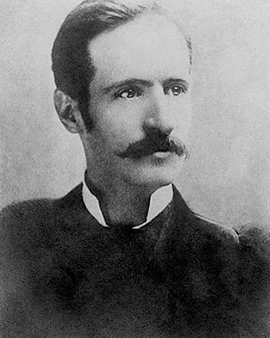The setting is New York City, a place of pulsating energy and constant change. It was here that a talented painter was born on October 15, 1847, Ralph Albert Blakelock. Blakelock was not a typical 19th century painter who sought the tried and true path to Europe to hone his artistic skills and seek inspiration. Instead, he took a different, rather unusual path. His canvas was the untamed and rugged heart of the Wild West, a landscape as diverse and unruly as the art he created. But despite his innovative approach, success was not immediate, and Blakelock struggled to support his family of eight. The bittersweet irony of Blakelock's life manifested itself when he returned to New York and eventually suffered from mental health problems. It was these very difficulties that brought his art the public attention it had previously lacked. His bizarre and fateful behavior of painting million-dollar bills and cashing them in banks brought him attention and ultimately success. But the price was high: a diagnosis of paranoid schizophrenia and two decades in a mental institution, from 1899 until his death in 1919.
Blakelock's works are characterized by his use of light, especially moonlight, which he depicted with such intensity that it virtually flooded his paintings. The dramatic contrasts between light and dark, as well as his unusual attention to detail, created a visual language that captivates and fascinates the viewer. His 1885 "Moonlight," an outstanding example of his art, sold at auction in 1917 for a then-record $20,000 - the highest price ever paid for a work by a living American painter. Blakelock's life and art continue to be a source of inspiration decades after his death. Paul Auster, for example, incorporated Blakelock's stunning moonlight paintings into his novel Moon over Manhattan. But Blakelock's legacy lives on not only in literature, but also in our modern world, where works of art can be reproduced as fine art prints on high-quality material and enjoyed by a wide audience. These reproductions, made with the utmost care and respect for the original artwork, allow us to continue to appreciate and value the extraordinary talent and vision of artists like Ralph Albert Blakelock.
×





.jpg)
.jpg)
.jpg)
.jpg)
.jpg)
.jpg)
.jpg)
.jpg)
.jpg)
.jpg)
 - (MeisterDrucke-113005).jpg)
 - (MeisterDrucke-113005).jpg)
.jpg)
.jpg)
.jpg)
.jpg)
.jpg)
.jpg)
.jpg)
.jpg)
.jpg)
.jpg)
_-_(MeisterDrucke-661631).jpg)
_-_(MeisterDrucke-661631).jpg)
.jpg)
.jpg)
.jpg)
.jpg)
.jpg)
.jpg)
.jpg)
.jpg)
.jpg)
.jpg)
.jpg)
.jpg)
.jpg)
.jpg)
.jpg)
.jpg)
.jpg)
.jpg)
.jpg)
.jpg)
_-_(MeisterDrucke-1598847).jpg)
_-_(MeisterDrucke-1598847).jpg)
.jpg)
.jpg)
.jpg)
.jpg)
.jpg)
.jpg)
.jpg)
.jpg)
.jpg)
.jpg)
.jpg)
.jpg)
.jpg)
.jpg)
.jpg)
.jpg)
.jpg)
.jpg)
.jpg)
.jpg)
_-_(MeisterDrucke-1449759).jpg)
_-_(MeisterDrucke-1449759).jpg)
.jpg)
.jpg)
.jpg)
.jpg)
_-_(MeisterDrucke-1495840).jpg)
_-_(MeisterDrucke-1495840).jpg)
.jpg)
.jpg)
.jpg)
.jpg)
.jpg)
.jpg)
.jpg)
.jpg)
.jpg)
.jpg)
.jpg)
.jpg)
_-_(MeisterDrucke-1490277).jpg)
_-_(MeisterDrucke-1490277).jpg)
.jpg)
.jpg)
.jpg)
.jpg)
.jpg)
.jpg)
.jpg)
.jpg)
.jpg)
.jpg)
_-_(MeisterDrucke-901421).jpg)
_-_(MeisterDrucke-901421).jpg)
.jpg)
.jpg)
.jpg)
.jpg)
.jpg)
.jpg)
_-_(MeisterDrucke-1527693).jpg)
_-_(MeisterDrucke-1527693).jpg)
.jpg)
.jpg)
.jpg)
.jpg)
_-_(MeisterDrucke-1455221).jpg)
_-_(MeisterDrucke-1455221).jpg)
.jpg)
.jpg)






